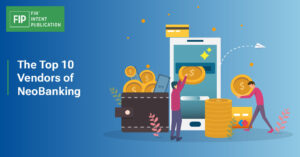Gary Wright, the head of research at Finextra, returned to the podium and said that in order to promote global trade and financial inclusion in 2023, it will be necessary to address the networks’ unpredictable nature, high cost, slow speed, lack of information, and transparency problems.
Fintech can assist in finding solutions to problems relating to financial exclusion and fill in the gaps left by the traditional financial services sector. Wright introduced the topic and turned the conversation over to Filip Versluys, business development director for B2B Connect Europe at Visa, who discussed how requirements across various jurisdictions and the quality and quantity of data continue to have an impact on payments, particularly cross-border payments.
Versluys emphasised the need for collaboration between public and private entities to address pain points. This will improve cost and speed, guarantee instant payments, and ensure effective money access. Additionally, “with richer data and technology, we will start seeing the benefits of the capabilities offered by technology.”
Customer expectations are changing quickly, said Mats Persson Bergius, head of lending at Lunar. As a treasury department or as an individual, I demand faster processing times and immediate payments. Both the work and the price need to decrease.
According to Robert Pehrson, head of product management at SEB, ISO20022 is the “basic foundation for enabling change, but customers are struggling to adjust to that.” He offered a different perspective. He continued by examining how the main issue with societies becoming more digital is that various national agendas, as well as various authorities and central banks, are pervasive. Collaboration is ultimately necessary.
Bergius summarised the problems before challenging the value of an established bank and pointing out that granting challenger banks and neobanks access to rails might lead to a small rise in risk but might also spur open innovation, which might jeopardise the delivery of the bank’s own services.
According to Pehrson, it’s important to lay a solid foundation for innovation. Smaller businesses must find it simpler to open accounts with central banks, but “players must do what they’re best at. It is crucial to provide accessible, affordable, and straightforward solutions. But it’s not quite that easy. There are considerable challenges for fintech players, according to Bergius, who is also the chairman of the Swedish Fintech Association. “Access to infrastructure is difficult, even with licencing.”
He added that there is a significant AML risk for banks to accept new players because “it is ‘not worth it’ for a bank to handle a player like that in their customer base.”
The lines between what constitutes a bank and a fintech are blurring in 2023, according to Versluys. He discussed the need for “a newer breed of licence, but engagement across the ecosystem is needed. New policies are causing a change in what a bank is.
In his summary of the discussion, Bergius stated that the best way to characterise the interaction between banks and fintech companies is as “frenemies.” The local banking industry has worked hard to keep up with innovation, he said, but the Nordics as a region cannot fall behind. He predicted that innovation would continue.
Business controls, not necessarily the flow of money, must be instant in order to prevent this. Versluys made mention of the significance of predictability and making sure there is some element of optionality when offering customers services. He also suggested including fraud prevention in the optionality to reduce risk.
Versluys said, “Nothing is black and white.





